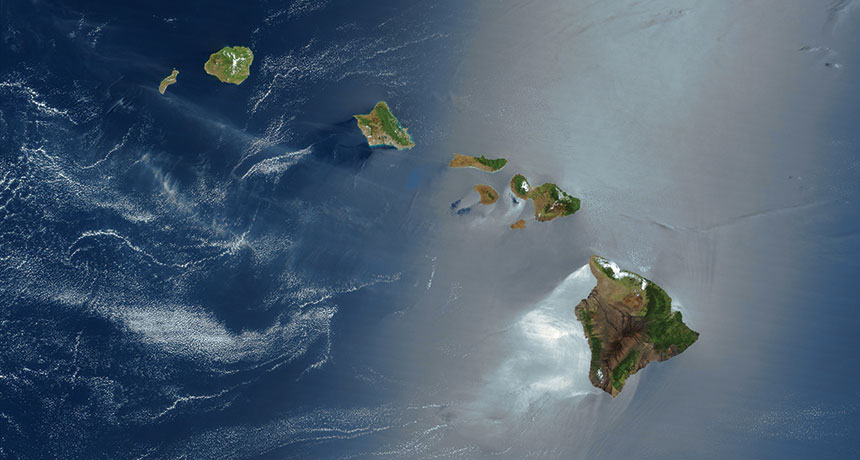New scenario proposed for birth of Pacific Plate
Largest chunk of Earth’s crust born out of odd tectonic circumstances

BIRTH OF A PLATE Scientists have a new origin story for the Pacific tectonic plate, which now underlies most of the Pacific Ocean. The plate formed in a gap between three other plates, the scientists propose.
Jacques Descloitres/MODIS Rapid Response Team/GSFC/NASA
A three-way tectonic tango may have led to the birth of what is now the largest chunk of Earth’s crust.